The Future of Automotive Testing Conference
Comprising pre-conference technical workshops on October 22 and a two-day conference with panel discussions and keynotes from October 23-24, the brand-new Future of Automotive Testing Conference 2024 in Novi, MI, is a premier gathering of industry leaders, innovators, researchers, and professionals involved in automotive testing, validation, and quality assurance. The conference aims to explore the latest advancements, emerging trends, and future challenges shaping the automotive testing landscape.
Located within Automotive Testing Expo North America, the world’s leading international expo for every aspect of automotive testing, development and validation technologies, the conference will navigate the evolving landscape of automotive technology and pave the way for safer, more efficient, and sustainable vehicles of tomorrow.
The conference is free to attend but seats are limited and registration is required.
Program
Pre-conference technical workshop (October 22)
10.30am - 12.30pm
The workshop is free to attend, but with limited availability and separate pre-registration is necessary. Please register via the link to the dedicated form in the workshop section of this website. 10.30am
Implementing ODD to support autonomous vehicle development, validation, road testing and compliance communications
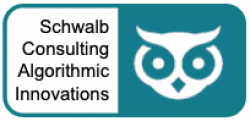 Dr Edward Schwalb
Dr Edward SchwalbConsultant
Schwalb Consulting LLC
USA
The operational design domain (ODD) is regarded as a critical component for establishing trust and maintaining compliance for autonomous driving systems. There is broad consensus that a common understanding is needed on the specification and development of credible ODD descriptions that support multiple stakeholders. This workshop will clarify the scope of the ODD, and how to balance between over-specifying and under-specifying to avoid unnecessary legal exposure due to over-commitment with sufficient information and yet instill confidence. It will review the related best practices including UL 4600, AVSC, ISO 35403, OpenODD and SAE On Road Automated Driving (ORAD) activities. It will review exchange formats, taxonomies, modular specification of ODD conditions and applications to operational domain (OD) datasets. It will discuss how ODD can be developed and understood incrementally, supporting both internal and external stakeholders. The presentation will review practical methods and commercial tools that can integrate ODD in the validation process. Upon completion, workshop participants will have a comprehensive end-to-end understanding of the role of an ODD, methods to develop and communicate specifications, and the trade-offs associated with over- and under-communicating in the context of various standardization activities and best practices.
Conference - Session 1 (October 23 AM)
10am - 12.30pm
Moderator
 Dr Partha Goswami
Dr Partha GoswamiPrincipal
PG Mobility Analysis
USA
10am
Opening address
 Rachel Evans
Rachel EvansEditor
Automotive Testing Technology International
UK
10.10am
The software-defined vehicle (SDV) and a paradigm shift in product development, testing and validation
 Dr Partha Goswami
Dr Partha GoswamiPrincipal
PG Mobility Analysis
USA
The automotive industry is at the inflexion point of a significant transition from a hardware-centric product development to a software-centric one, built on the foundation of a software-defined vehicle (SDV) architecture. Traditionally, hardware in an automotive system is validated, re-validated and certified according to strict safety requirements such as ISO26262. Release of automotive software, without similar rigorous diligence, can lead to disastrous failures. The talk will explore the challenges of testing and validation in this new paradigm of software-first product development, that needs to evolve from a V-model of testing and development and embrace a continuous integration and continuous development or CI/CD approach.
What the audience will learn
- Understand technology hype cycle in the context of software defined vehicle (SDV)
- Comprehensive value proposition of SDV from a consumer perspective
- Understand how SDV represents a
- Continuous Integration/Continuous Deployment/Continuous Testing (CI/CD/CT) - transition from hardware-centric to software-centric product development/testing
- High level challenges & execution issues - in the context of testing and validation
10.35am
Fireside chat with Mark Klavon
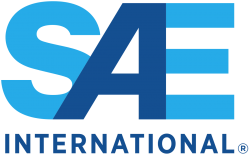 Mark Klavon
Mark KlavonSenior technical program manager
SAE International
USA
Join the SAE’s technical program manager - global ground vehicle standards, Mark Klavon, as he discusses the future of testing, research and standards with Partha Goswami
What the audience will learn
- How SAE Legacy Programs utilize testing for certification
- How SAE Cooperative Research creates new test techniques
- How SAE testing leads to updates in government policy and regulations (NHTSA, EPA, FMVSS)
11.10am - 11.40am
Break
11.40am
Future automotive testing – a holistic view
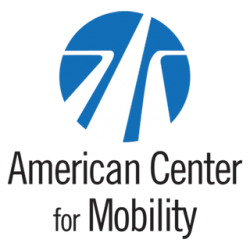 Dr Sushanta Das
Dr Sushanta DasTechnical director
American Center for Mobility
USA
The American Center for Mobility is a one-of-a-kind global development center in SE Michigan. Its state-of-the-art facilities enable it to be involved in testing and development of ADAS/AVs, EVs, V2X infrastructure and interoperability, as well as utilizing the most advanced simulation, data and engineering tools. Serving the entire automotive ecosystem, it is involved in almost every stage in automotive testing toward safe, secure and sustainable mobility. Drawing from examples of real test cases conducted at ACM, Das will discuss the most recent advances in testing technologies and practices, along with ACM’s view of what the future holds for automotive testing and how to address the challenges it will bring.
12.05pm
Concurrent durability vehicle testing at component level
 Pankaj Sharma
Pankaj SharmaGeneral manager
Maruti Suzuki India
India
In the realm of automotive engineering, the pursuit of optimization and efficiency is relentless. Traditional vehicle component testing methodologies often involve the use of separate testing rigs for individual components. This approach, while methodical, can lead to increased development time and resource allocation. This presentation will explore the benefits of transitioning to concurrent testing and how it stands as an innovative solution for overall improvement in the vehicle development process. Concurrent testing represents a paradigm shift in vehicle component testing by implementing a system where multiple components can be tested simultaneously.
What the audience will learn
- Improved resource allocation and cost-effectiveness
- Reduction in the number of vehicles required for testing purposes
- Decreased development time, accelerating the overall vehicle development cycle
- Increased efficiency through simultaneous component testing
- Innovative approach for testing in other fields
12.30pm - 2pm
Lunch
Conference Session 2 (October 23 PM)
2pm - 5pm
Moderator
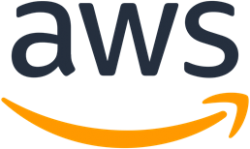 Dr Sandeep Sovani
Dr Sandeep SovaniGTM head HPC for engineering modeling and simulation
Amazon Web Services
USA
2pm
An insight into optimizing vehicle dynamics, component design, and testing for electric vehicle development
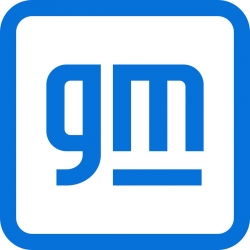 Dr Mohammad Behroozi
Dr Mohammad BehrooziVehicle dynamicist
General Motors
USA
Optimizing vehicle dynamics is crucial for shaping the performance and handling of electric vehicles (EVs). Unlike internal combustion engine (ICE) vehicles, EVs demand a different approach due to their unique mass distribution, inertia characteristics and electric power sources. This talk examines how these factors require a revised strategy for designing, optimizing and testing key components such as tires, dampers, bushings and steering systems. Addressing these specific challenges highlights effective strategies for enhancing the performance, safety, and comfort of EVs while accommodating their distinct dynamic profiles.
2.25pm
Method for validating electric vehicles using high-voltage battery simulation
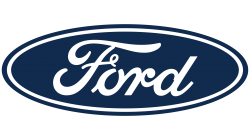 Vincent Sabatini
Vincent SabatiniHigh-voltage systems test engineer
Ford Motor Company
USA
This presentation summarizes a test solution developed at Ford Motor Company that enables high-voltage system/vehicle lab testing without requiring full, physical batteries. This test solution saves significant costs on prototype parts and vehicles, increases testing capability, speeds up testing and development timelines and increases user safety. The solution is also more environmentally sustainable and flexible for continued electric vehicle development. It allows Ford to tackle its quality improvement goals.
What the audience will learn
- Test solution overview
- Technical innovation – what we have done differently
- Technical significance – problems solved and rollout
- Benefits to Ford Motor Company
- Benefits to the customer
2.50pm
Test and evaluation of inertial sensor performance for active safety applications
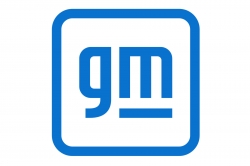 Janak Kumar Dundigalla
Janak Kumar DundigallaSenior vehicle systems engineer - sensing system execution
General Motors
USA
Automated vehicles and ADAS features require precise localization sensors for safe and reliable operation. Specifically, high-performance motion sensors are used to localize the vehicle when satellite radio navigation signals are unavailable or are less trustworthy. This presentation describes procedures to test these motion sensors, and also provides recent test results for a state-of-the-art IMU.
What the audience will learn
- Role of inertial sensors and satellite radionavigation for automated driving
- How to effectively test performance of inertial sensors using precise reference equipment
- Test results from recent GM prototype IMU evaluation
3.15pm - 3.45pm
Break
3.45pm - 4.35pm
Panel discussion - Future of virtual engineering
Automotive OEMs and suppliers have been using virtual engineering approaches for product
development for over a decade. Virtual engineering is expected to play a broader role in the future with the advent of new technologies such as AI and cloud infrastructure. This panel will share unique insights from leaders who are at the forefront of developing and applying virtual engineering methods at some of the world’s leading automotive companies. First, we will hear from the panelists about the current state of virtual engineering – how virtual engineering is being utilized today, what impact it is having and what challenges and opportunities it is facing. The discussion will conclude with the panelists providing an outlook into a vision for the future – what new technologies are coming on the horizon, how they will change virtual engineering processes and what impact they will have on the overall automotive product development process.
 Dr Sandeep Sovani
Dr Sandeep SovaniGTM head HPC for engineering modeling and simulation
Amazon Web Services
USA
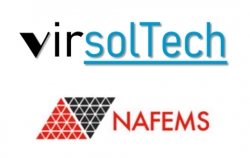 Mario Felice
Mario FelicePrincipal and founder/technical fellow
virsolTech Engineering Consulting / NAFEMS
USA
 Ram Bhandarkar
Ram BhandarkarDirector of virtual engineering
Stellantis
USA
4.35pm
Leverage real-world data for ADAS development in the SDV context
 Akshay Sheorey
Akshay SheoreyGlobal lead - Simcenter autonomy
Siemens Digital Industries Software
USA
The software-defined vehicle (SDV) has become a critical approach for the development of sophisticated ADAS systems. These systems use sophisticated sensors and compute hardware generating large amounts of data, which is used for the development as well as the verification and validation (V&V) of these systems. This presentation will show how real-world data, an accurate and holistic digital twin for the vehicle, sensors, and the ECU/SoC can be integrated into a software-defined vehicle development framework. This framework allows users to adopt a shift-left methodology by integrating digital twins very early in the development process and ensuring a robust V&V workflow.
What the audience will learn
- Data analysis and automated scenario extraction
- ADAS development in the context of SDV
- Scenario-based testing
Conference Session 3 (October 24 AM)
10am - 12.35pm
Moderator
 Rachel Evans
Rachel EvansEditor
Automotive Testing Technology International
UK
10am
Co-opetition and consolidation in automotive testing: strategies to 2030
 Shyam Raman
Shyam RamanPrincipal consultant
Frost & Sullivan
USA
Automotive OEMs are actively looking to simplify and automate their testing and certification processes as a combined part of their migration from ICE to xEV. As a result, Frost & Sullivan is seeing a transformative change downstream that will affect OEMs and Tier 1, 2 and 3 suppliers. It will be critical for solution suppliers to collaborate and compete collectively to navigate imminent changes in the testing/certification structure. Strategies required in collaboration are often intricate and need to emphasize the balance between maintaining cash flow and reduced profitability. However, focusing on long-term rewards will help companies avoid becoming obsolete.
What the audience will learn
- How auto makers and suppliers are increasingly collaborating, even with competitors, to reduce costs, share expertise, and speed up innovation, especially in areas like electric vehicles (EVs)
- The changing outlook of industry in seeing mergers and partnerships in testing services to pool resources, reduce costs, and meet stricter regulatory requirements faster
- How co-opetition and consolidation are increasingly important for global OEMs that need to adapt their vehicles to multiple markets
- The benefit of shared testing platforms that allow for faster localization of vehicles to meet diverse regulatory and environmental conditions
- How consolidation also enables more efficient use of testing resources, which is critical as global testing requirements become more stringent and complex
10.25am
V2X – what automotive testing engineers need to know about 5GAA policy
 John Kwant
John KwantExecutive director, Americas
5GAA
USA
This presentation will review what C-V2X is and some of the current regulatory issues the industry is facing. It will also include a review of testing standards, what the challenges are for car makers, the importance of interoperability, and the process of certification.
What the audience will learn
- What is 5GAA?
- What is C-V2X?
- What federal regulatory issues is it facing?
- How is it tested and certified?
10.50am - 11.20am
Break
11.20am
Conversation – debunking common misconceptions about the analysis of EV powertrain technologies
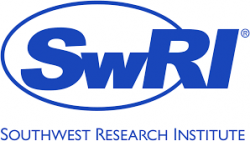 Kevin Jones
Kevin JonesLab manager, Energy Storage Technology Center
Southwest Research Institute
USA
 Rachel Evans
Rachel EvansEditor
Automotive Testing Technology International
UK
11.45am
Ahead of the curve: shaping the future of cybersecurity testing
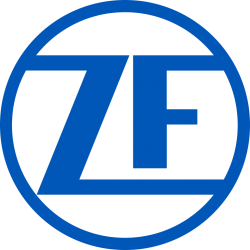 Greg Yezersky
Greg YezerskyServices manager
ZF
USA
ZF provides trusted cybersecurity experience rooted in automotive innovation and the delivery of embedded solutions. The result is that ZF knows how to anticipate future systems vulnerabilities and, as a result, how to build futureproof test programs to help defeat next-generation cybersecurity threats. ZF will present one specific use case of 'how to', and a roadmap to avoiding costly issues during the product development process, for our partners and customers.
What the audience will learn
- Today's cybersecurity is reactive; the imperative of proactive cybersecurity
- Evolutionary logic: the key to reliable evolutionary forecasting
- One use case: the TRIAD principle
- Integrating evolutionary forecasting into the product development process for enhanced cybersecurity
12.10pm
Ensuring battery safety in vehicle crash scenarios with due care testing
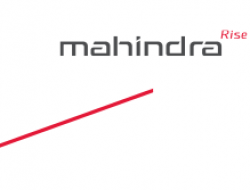 Lakshmi Prasad Bhatta
Lakshmi Prasad BhattaManager of CAE – Detroit MRV
Mahindra Automotive North America
USA
As electric vehicles (EVs) continue to gain prominence in the global automotive market, ensuring battery safety during vehicle crashes has become a critical area of focus in automotive testing and development. This presentation will explore the engineering challenges and innovative solutions designed to safeguard high-voltage battery systems in the event of a collision. One of the most challenging and high-risk scenarios is the side pole collision, where the vehicle's battery system is exposed to extreme lateral forces. To address these risks and ensure the safety of both occupants and the vehicle, automakers employ stringent side pole testing combined with due care testing procedures. These processes evaluate the performance and resilience of the battery system under crash conditions, helping to mitigate risks associated with battery failure, such as thermal runaway, fire, or electrical short circuits.
What the audience will learn
- How advanced crash simulations are utilized to predict and prevent damage to battery systems during vehicle impacts.
- The importance of ensuring the structural strength of the battery enclosure during high-impact crashes, particularly side pole collisions.
- How testing protocols and safety standards have evolved in response to the growing use of EVs and hybrid vehicles, ensuring battery safety across diverse crash scenarios.
- How due care testing ensures the resilience of battery systems and their ability to withstand crash forces without compromising safety.
Who Should Attend
- Automotive OEMs
- Automotive Suppliers and Component Manufacturers
- Testing Laboratories and Service Providers
- Research Institutions and Academia
- Regulatory Bodies and Government Agencies
- Technology Providers and Solution Vendors
- Cybersecurity Experts and Data Analysts
- Industry Consultants and Advisors
- Startups and Innovators
Partner with us
- Brand Visibility: Sponsoring the conference provides companies with prominent branding opportunities, including logo placement on promotional materials, signage, and digital platforms as well as direct engagement with your target audience.
- Thought Leadership: Sponsoring organizations can position themselves as thought leaders within the automotive testing by participating in panel discussions, delivering keynote presentations, and sharing insights on emerging trends, innovations, and best practices.
- Product Showcase: Sponsoring organizations can showcase their products, technologies, and solutions to a captive audience of industry professionals.
- Networking Opportunities: The conference offers a platform for sponsors to network with key stakeholders, including automotive OEMs, automotive suppliers and component manufacturers; testing laboratories and service providers; research institutions and academia; regulatory bodies and government agencies; technology providers and solution vendors; cybersecurity experts and data analysts; industry consultants and advisors; startups and innovators. Networking events, receptions, and visitor relaxation areas facilitate meaningful interactions and relationship-building opportunities.